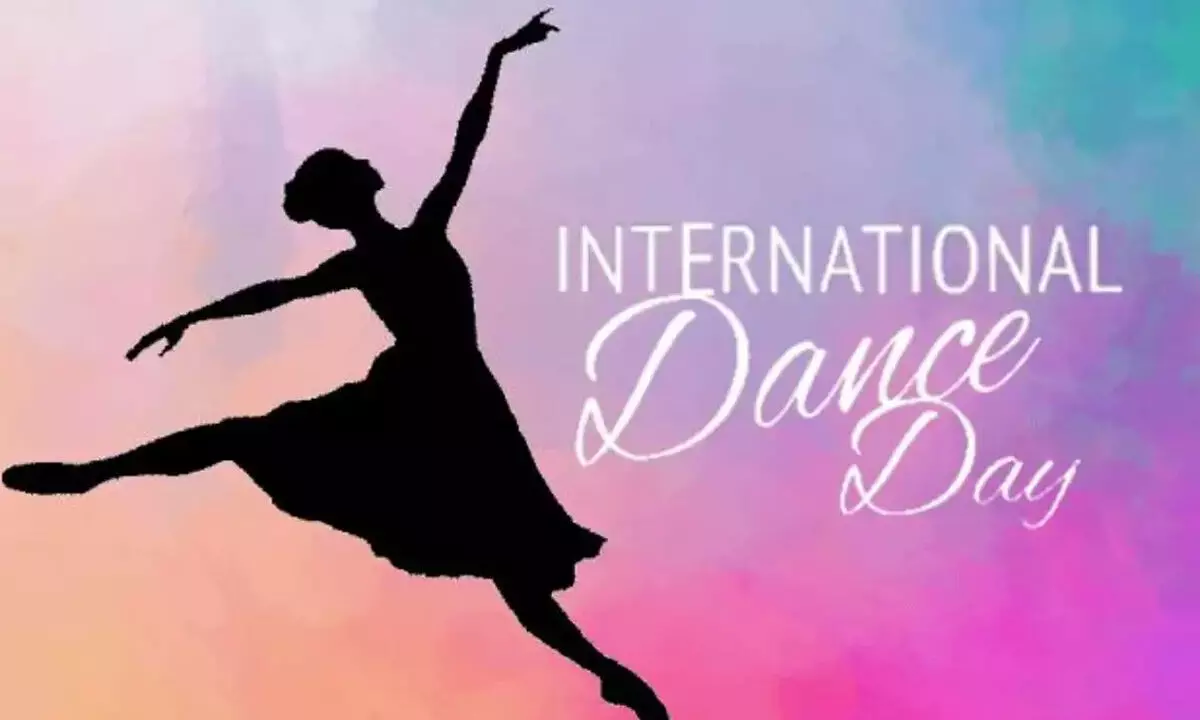Live
- President Droupadi Murmu Arrives in Hyderabad to Attend Koti Deepotsavam
- Border-Gavaskar Trophy 2024-25: Rohit Sharma to join Indian team midway of Perth Test, set to be available from second Ind vs Aus Test
- Scholarships For Students
- EFLU hosts talk on 75 years of the Indian Constitution
- Mohan Babu: Half a Century of Cinematic Brilliance and Unwavering Legacy
- Chandrababu Vows Strict Measures for Women's Safety and Drug Control
- Deputy CM Bhatti Vikramarka Highlights Congress Government's Achievements
- PCC Expansive Meeting Held at Gandhi Bhavan in Hyderabad
- Formula 1: I didn't really want to come back after Brazilian GP, admits Hamilton
- IND vs AUS BGT 2024-25: Pat Cummins says the pressure of playing at home is there but team well prepared to beat India and win Border-Gavaskar Trophy
Just In
International Dance Day 2024: History, Significance, and Types of Classical Dance Forms


International Dance Day, established in 1982 by the Dance Committee of the International Theatre Institute (ITI) in collaboration with UNESCO, is celebrated annually on April 29
History of International Dance Day
International Dance Day, established in 1982 by the Dance Committee of the International Theatre Institute (ITI) in collaboration with UNESCO, is celebrated annually on April 29. This date coincides with the birthday of renowned French dance artist Jean-Georges Noverre (1727), acknowledged as a pioneer of modern ballet.
Since its inception, International Dance Day has featured an annual message from distinguished choreographers or dancers, selected by the International Dance Committee and the Executive Council of ITI. These messages are translated into multiple languages, serving as global inspirations for the celebration of dance as a universal language.
Significance of International Dance Day
International Dance Day serves as a celebration of dance as a universal art form that transcends political, cultural, and ethnic boundaries. It aims to foster unity and understanding among people through the shared language of dance. Moreover, it provides a platform for dance communities worldwide to promote their work, raising awareness about the significance and value of dance in all its forms. This, in turn, encourages support and recognition for the art of dance on a global scale.
Types of Classical Dance Forms
1. Bharatanatyam
Originating from Tamil Nadu, Bharatanatyam is among the oldest and most widely practiced classical dance forms. It is characterized by precise footwork, graceful movements, and expressive storytelling. Performers adorn their hands and feet with red Kumkum (alta) powder during performances to accentuate intricate gestures.
2. Kathak
Kathak, rooted in Northern India, particularly Uttar Pradesh, is renowned for its vibrant footwork, intricate rhythms, and rapid spins. Kathak dancers often present narrative pieces ('kathas') depicting stories from mythology, history, and daily life.
3. Odissi
Originating in the temples of Odisha, Odissi is a major classical dance form. Performances often portray stories, spiritual messages, or devotional poems from Hindu texts using symbolic costumes, intricate body movements, and expressive gestures.
4. Kuchipudi
Originating from Andhra Pradesh, Kuchipudi is a classical dance form integrating dance, drama, and music. Known for its quick footwork, graceful movements, and dramatic storytelling, it draws inspiration from ancient Sanskrit texts like Natya Shastra, featuring solo performances by male and female dancers.
5. Manipuri
Also known as Manipuri Raas Leela, this classical dance form is characterized by grace, fluid movements, and devotion to Lord Krishna. Originating from Hindu scriptures of Vaishnavism, Manipuri dancers enchant audiences with gentle swaying motions, delicate footwork, and intricate hand gestures.
6. Mohiniyattam
Originating from Kerala, Mohiniyattam, meaning "the dance of Mohini," embodies Lord Vishnu's female enchantress avatar. Known for its soft footwork, hand gestures, and expressive facial expressions, it is a captivating classical dance form.
7. Kathakali
A unique Indian dance-drama from Kerala, Kathakali is distinguished by bold makeup and elaborate costumes, translating to "story-play." Its performances are marked by intricate movements and elaborate storytelling.
8. Sattriya
Originating in Assam's Vaishnava monasteries in the 16th century, Sattriya is characterized by devotion to Krishna and is seen as a modern theater art. Group dances, often preceded by musical interludes, are common features of Sattriya performances.
9. Chhau
A semi-classical Indian folk dance, Chhau combines martial arts and storytelling. Initially taught exclusively to male dancers, it now includes women performers in all-women troupes. Three regional variations exist: Purulia Chhau (West Bengal), Seraikella Chhau (Jharkhand), and Mayurbhanj Chhau (Odisha). Each variation is associated with specific festivals and cultural traditions.

© 2024 Hyderabad Media House Limited/The Hans India. All rights reserved. Powered by hocalwire.com






